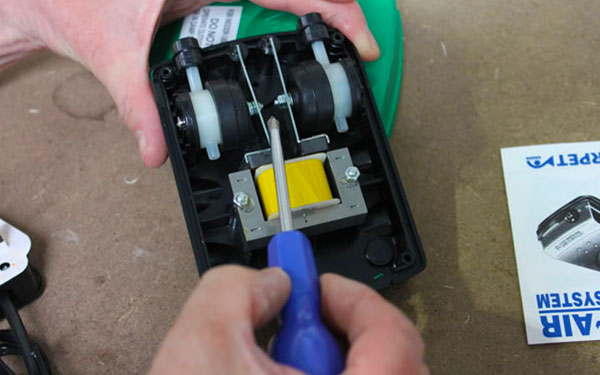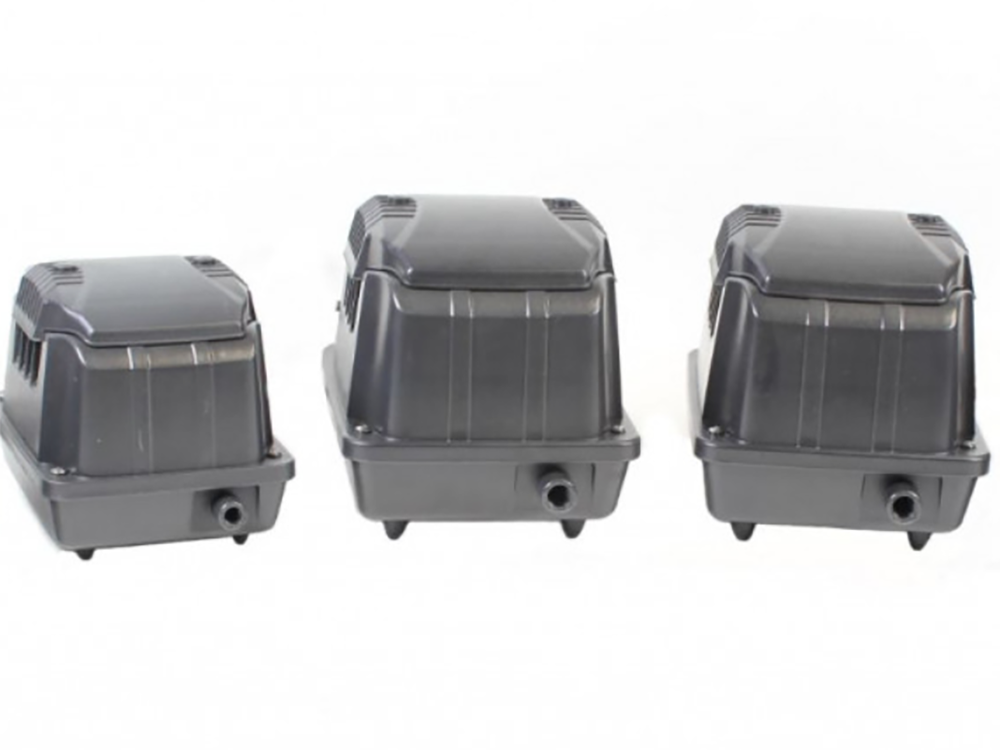Troubleshooting guide for pond air pump not pumping air
Airpumps provide vital oxygen to ponds and aquariums, helping to keep fish and even filter bacteria alive.
But, as with pond pumps and pond liners, lots of things can negatively affect airpump performance and the number of bubbles they produce, and sometimes air flow and air bubbles can stop altogether.
Check for kinks in the airline
The most common cause of reduced or lack of airflow is a kink in the airline. Check the whole length of the airline to make sure it isn’t bent, squeezed or folded anywhere. If you need to bend airline through 90 degrees consider using a 90-degree elbow fitting. Silicone airline may also bend more easily without kinking versus PVC.
Check the pond water depth
If you move an airstone to a deeper part of a pond the water pressure will cause fewer bubbles to be released. Move the airstone to shallower pond water to see if the flow is restored, or upgrade to a larger, more powerful air pump. Tropical, cold water or marine, its not the type of water that affects air production, its the depth, and the deeper the pond or aquarium, the harder it is to blow bubbles right down at the bottom.
Check the airstone
Old airstones can block and prevent air from flowing properly through them. How big is the air bubble and are bubbles coming out of the whole surface area of the airstone? Try a new airstone to see if the flow is improved.
Check the airpump valves
Some airpumps have air control wheels built-in. Or a tap, valve or manifold may be fitted in the air tubing. Pull the airline off one end, turn the taps or valves to fully open and see if you can feel the air being blown from it. Remove the airstone and place the airline into a bucket of water. If bubbles are coming out the pump is working.
Turn the taps or controllers to see if the amount of air increases or decreases. Inline taps and valves can be removed altogether if you want maximum, unrestricted airflow.
Check the airpump non-return valve
More commonly fitted to aquarium airpumps, Non-return valves (also called a check valve,) prevent water back syphoning in the event of a power cut. If water travels down the airline from the aquarium up above, the pump may be irreparably damaged and it may even cause a flood in your living room.
Non-return valves do place a large restriction on the amount of air that a pump delivers, and if fitted the wrong way they block airflow entirely.
Disconnect the non-return valve and look for a directional arrow moulded into its plastic casing. Blow down valve to see which way it allows air to flow, and then fit in inline in the air tubing.
Check the airpump air inlet
All airpumps suck atmospheric air into the pump body before pushing it out at pressure via the outlet(s). Lift up the pump and look underneath to locate the air inlet. If there is a felt pad it may need cleaning or replacing. Check that the inlet isn’t obstructed when the airpump is placed back down. This can shorten the lifespan of an air pump.

Service the pond or aquarium airpump
This isn’t for every fishkeeper, but just like pond pumps, airpumps can be opened up and serviced. Disconnect from the electrical supply first and then use a screwdriver to remove the screws in the pump body and lift off the pump’s outer casing.
Inside is a rubber diaphragm on a metal arm. Twin outlet pumps will have two diaphragms and two arms. Check the diaphragm for signs of wear and tear, and damage. Depending on make and model, spare diaphragms and service kits may be available for pond airpumps, but for aquarium pumps its quicker and easier to replace the whole pump.
Check the power supply
This may seam like an obvious one but also check that the air pump is plugged into the mains and switched on. Pond airpumps may be wired into an outdoor electric box which itself may have a switch. All plugs have fuses and outdoor weather proof electrical boxes have tiny switches in them too. Disconnect from all power supplies first then open up the switch box and look inside. is there a loose wire? Change the fuse in the electrical outlet and that's one less fault finder you've checked.









